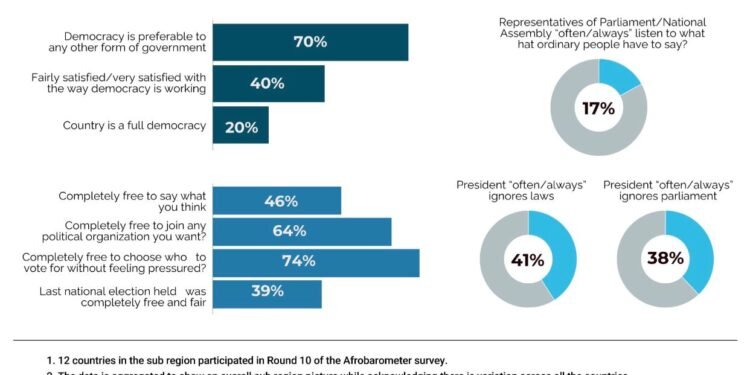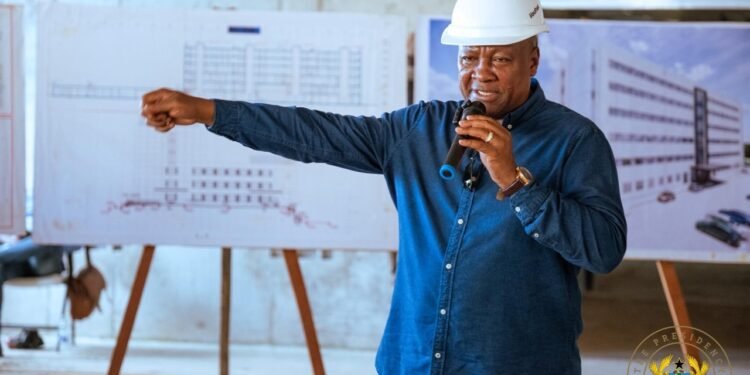The ECA is making strides in implementing its Disability Inclusion Strategy. Ms. Katharina Goetze shared the Disability Inclusion Strategy and showcased what the ECA was doing to identify and address challenges in achieving disability inclusion. She made a presentation during the first quarter Accountability and Programme Performance Review Meeting (APPRM).
The United Nations in June 2019 launched its Disability Inclusion Strategy in the context of the 2030 Agenda’s principle of leaving no one behind.
The UN plans to implement the strategy for five years but will review and update it as and when needed. It aims to enable the UN system to support the implementation of the Convention on the Rights of Persons with Disabilities (CRPD) and the SDGs. Also, it will support the Agenda for Humanity prepared for the 2016 World Humanitarian Summit, and the Sendai Framework for Disaster Risk Reduction.
Features of the strategy
According to Ms. Goetze, the strategy features four core areas. The first feature is leadership, strategic planning, and management. This includes senior leadership that champions disability inclusion and establishing teams with expertise on disability inclusion.
Also, the Associate Programme Management Officer with the DoA, stated that another feature of the strategy is inclusiveness. This entails ensuring full accessibility for all and actively involving persons with disabilities in all of its work.
Furthermore, programming as another feature entails joint initiatives to accelerate progress and supporting disability-inclusive programming. This is done through practical guidance for the field and headquarters.
The last but not the least is organizational culture. This means evolving internal systems to attract, recruit, retain, and promote persons with disabilities in the UN workforce, and building staff capacities to understand disability inclusion. The strategy is accompanied by 15 performance indicators to facilitate progressive improvement.
Meanwhile, the first report on the implementation of the strategy established a baseline on the status of disability inclusion in the UN system. The ECA released that report in 2020.
The United Nations Disability Inclusion Strategy provides the foundation for sustainable and transformative progress on disability inclusion. It hinges on all pillars of the work of the United Nations: peace and security, human rights, and development.
It includes a policy and an accountability framework, with benchmarks to assess progress and accelerate change on disability inclusion. The policy establishes a vision and commitment for the UN system on the inclusion of persons with disabilities.
Disability inclusion as a form of human rights
Highlighting the importance of disability inclusion as a human rights issue, Ms. Goetze said 15 percent of the world’s population lived with a disability.
Also, Ms. Goetze stated that there are three-pronged key approaches to the strategy. These are the Twin-track approach, intersectionality, and coordination. According to her, the Twin-track approach as the name suggests involve two tracks; 1 & 2. The first track sees disability as a cross-cutting issue which the UN must consider in all its works. On the other hand, Track 2 calls for Targeted programming.
Furthermore, intersectionality considers that factors such as age, gender, and location inform an individual’s experience. As such these factors also influence people with disabilities. Also, she highlighted that essence of a coherent and coordinated approach to accelerate progress, build on each other’s work and achieve inclusion.
The ECA has made strides to ensure that its compound increases accessibility to people with disabilities. Moreover, the ECA aims at creating an Accessibility Centre at the Conference Centre. The think tank has added sign language interpretation for meetings on request.
ECA to complete disability report by end of April
Meanwhile, the ECA aims to complete its report on disability inclusion by the end of April, documenting progress made so far. Moreover, the staff applauded the ECA for the work it is doing on disability inclusion. As such, they called on the institution to look beyond the compound to assist member States in this regard as well.
The Executive Secretary of the ECA, Vera Songwe, lauded the work being done by the team to ensure disability inclusion at the ECA. She said securing the rights of persons with disabilities was critical, adding this would also set an example for the organization’s 54 member countries. This helps moves them closer to upholding the core values and principles of the United Nations Charter.
READ ALSO: How Much Life Insurance Should an Individual Carry?























